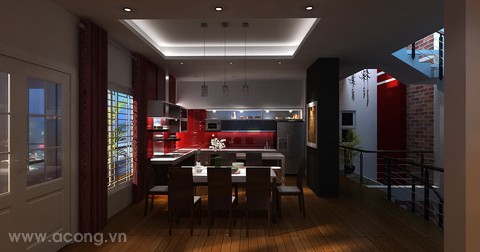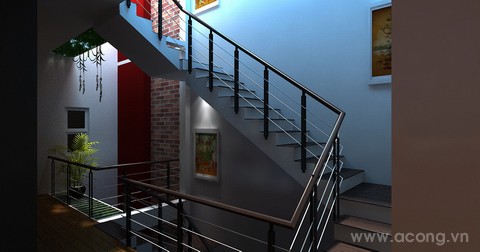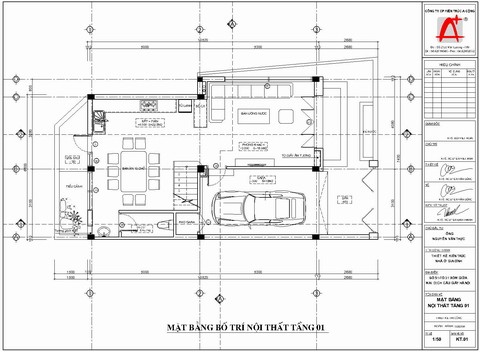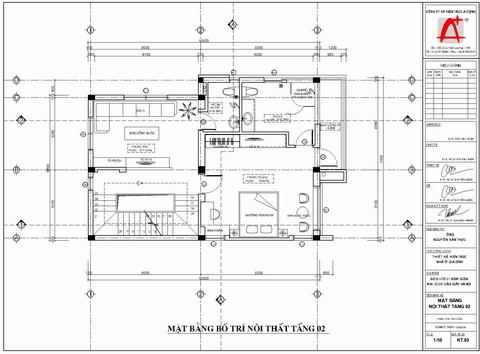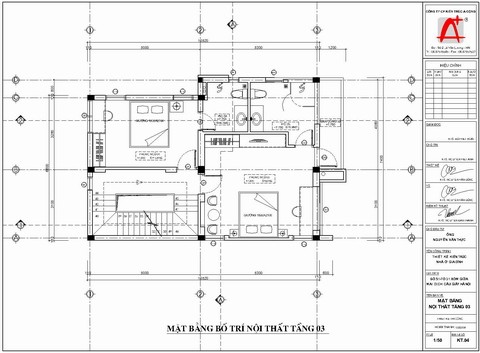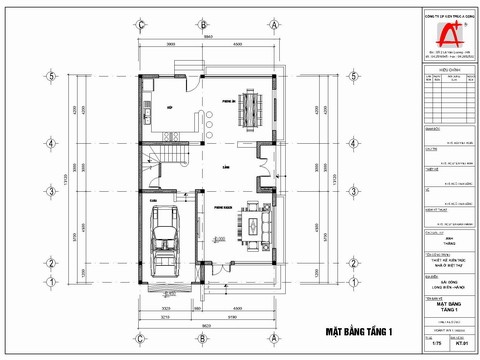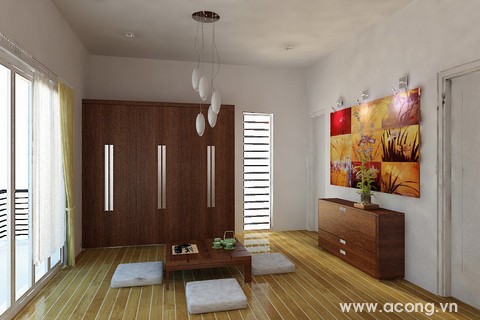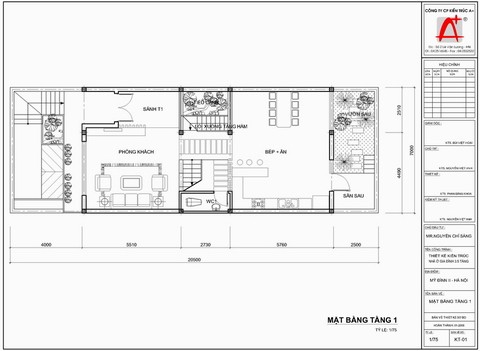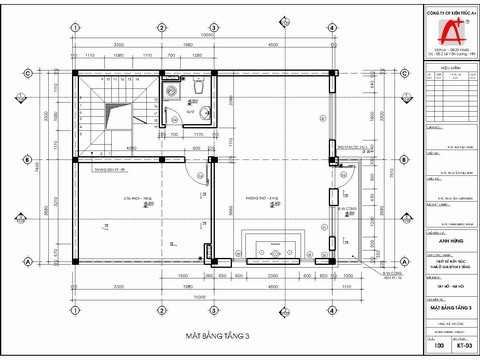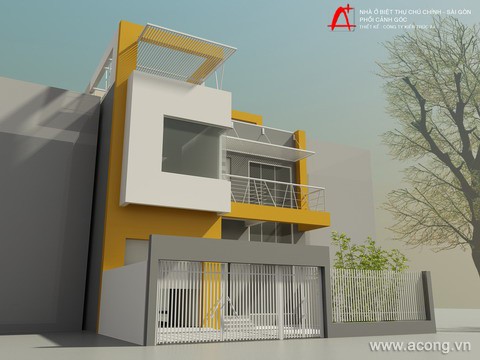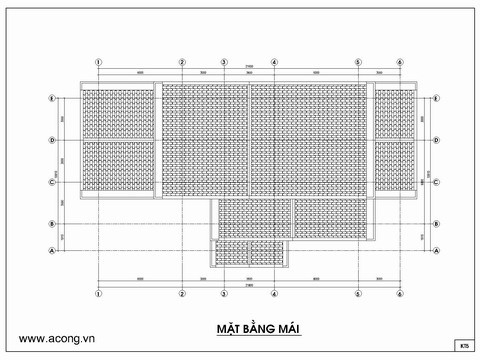Gothic Architecture
Development of Gothic architecture: Gothic sculpture is linked to the rise in Gothic architecture, which began at the Abbey Church of Saint-Denis (fig.2) in about AD 1130, then spreading to the cathedrals of Sens (1140), Noyons (1150), Senlis (1151), Paris (1163), Laon (1165), and Chartres (1194). By the 13th century, Gothic architecture and sculpture had become fully developed in the cathedrals of Amiens and Reims, and spread to major towns in Britain, Iberia, and Germany. The Romans, who were influenced by the techniques of the Etruscans, began the development of a mature vaulting system in the 1st century AD, which included both the barrel and the groined vault (fig.1), The groined vault is the intersection of two barrel vaults, producing a surface that has arched openings on its four sides, and thus divides the area to be vaulted into squares known as bays. Rediscovered by Romanesque architects, this type of vault became the basis for a more complex and varied type of vault construction in the Middle Ages (Bony 1983; Fitchen 1961).
two barrel vaults, producing a surface that has arched openings on its four sides, and thus divides the area to be vaulted into squares known as bays. Rediscovered by Romanesque architects, this type of vault became the basis for a more complex and varied type of vault construction in the Middle Ages (Bony 1983; Fitchen 1961).
The main shift of the Gothic era occurred from the older, heavier style of Romanesque architecture, based on a solid stone vault, to the lighter, elevated Gothic style based on both the Romanesque and Islamic use of the pointed arch and cross-ribbed vault. This shift coincided with widespread rebuilding of many older Romanesque cathedrals which had been destroyed by fire. The different phases of Gothic architectures in northern France progressed from the Early Gothic to the High Gothic and Rayonnant styles and the eventual Flamboyant style.
[Fig.1: Diagram of Romanesque vs. Gothic vaults].
The two main structural innovations of Gothic architecture were pointed arches and ogival or ribbed vaulting (Bony 1983). By the 12th century, architects realized the superiority of the groined vault compared to the barrel vault and started to add ribs, which were used to support the weight of the vault. Cross-ribbed vaulting functions in much the same manner as plain groined vaulting, except that it is reinforced with ribs, and can be made much thinner. The vault uses a diagonally reinforced arch resting on thin pillars, permitting the walls to be hollowed out (and thus, filled with windows), while also allowing the vaults to extend higher. At Amiens, for example, the introduction of an extra transverse rib between the diagonal ribs of the vault allowed for a lighter and more elevated interior. Such light, skeletal construction employing cross ribbed-vaults and other thin carrying structures (interior columns, exterior flying buttresses), replaced the massiveness of Romanesque vaults. This had the revolutionary effect of opening up the interior space of a large building such as a church. As the Gothic era progressed, vaulting became increasing complex and saw the development of more varied forms such as the quatri-partite vault and the sexpartite vault. Slender columns and stained glass windows also gave the church a more spacious and heightened effect (fig.3).
Initially occurring at the Abbey Church of Saint-Denis, architects now linked the transept and the choir together, often reducing the size of the transept, and creating single or double ambulatories with radiating chapels and side aisles (fig.2). The church exterior was also characterized by double span flying buttresses and the light admitting rose window along with a wealth o f sculpture that became much more realistic as the Middle Ages progressed. Increasing amounts of tracery, pinnacles, and gargoyles also became another common feature.
f sculpture that became much more realistic as the Middle Ages progressed. Increasing amounts of tracery, pinnacles, and gargoyles also became another common feature.
Sources of architectural influence: The new Gothic architecture in France had its roots in older Romanesque forms of England, Italy, and Normandy. The origin of the Gothic style has a strong Norman influence in the cathedrals of Jumièges, Evreux, and Lesay, which inspired several architects in the Paris region. By the late 11th century, there had already been efforts to increase the height of Norman churches at Caen, Bayeux, Jumièges, or Mont-Saint-Michel.
[Fig.2: Saint Denis ambulatory (1140-1144), showing ribbed vaults supported by a slender column (photo: Athena Review)].
By the early 12th century, prototypes of ribbed vaults and pointed arches had developed at the Rivolta d'Adda in Italy (1100), Durham cathedral in England (1093), and Jumièges in Normandy (ca.1120-1125). Some scholars also suggest that the ribbed vault may have first appeared at the Church of Sant' Ambrogio in Milan (1060). As noted, ribbed vaulting may have originated in Islamic Spain, where it had appeared as early as the second half of the 10th century (Bony 1983).
Likewise, the pointed arch has its origin in the Islamic architecture of the near East of the 8th century which then spread rapidly throughout Egypt and Tunisia into Moorish Spain and towards Italy. According to one theory (Bony 1983), the pointed arch may have been used on the island of Sicily, which soon spread to France via the Norman Conquests of the island in the 1060s and 1070s.
The spread of Gothic architecture from northern France to other regions occurred partly through the movement of architects and master masons or sculptors to new building projects or, through widespread competition between bishops, monasteries, and other patrons of cathedrals (see Funding the Construction of Gothic Cathedrals by Wolfgang Schöller). The Gothic style was quickly absorbed in England, which then had political ties with France. Durham cathedral, consecrated in AD 1133 (which had already pioneered the use of ribbed vaults) showed continuing early Gothic influences in its construction. The main breakthrough in England occurred in the 1170s with the cathedrals of Canterbury, Lincoln, and slightly later at Salisbury. Soon the first Gothic cathedrals were erected on the Iberian peninsula, starting in the 1190s at Evora in Portugal, and from the 1220s at Léon, Burgos, and Toledo in Spain.
The influence on cathedral art within the territories of present-day Germany, the Netherlands, and Italy started slightly later at about 1230-50, although some earlier buildings had already introduced initial elements of the Gothic style. Whereas Gothic architecture had difficulty establishing a secure foothold in Italy, with its artistic traditions inspired by the classical style, it had an enormous impact in Germany, which eventually took over the leading role as an innovative center of the Gothic tradition. As in England, where also specific, but more nationally restricted Gothic styles developed, the German late Gothic art survived into the 16th century.
Development of Gothic architecture: Gothic sculpture is linked to the rise in Gothic architecture, which began at the Abbey Church of Saint-Denis (fig.2) in about AD 1130, then spreading to the cathedrals of Sens (1140), Noyons (1150), Senlis (1151), Paris (1163), Laon (1165), and Chartres (1194). By the 13th century, Gothic architecture and sculpture had become fully developed in the cathedrals of Amiens and Reims, and spread to major towns in Britain, Iberia, and Germany. The Romans, who were influenced by the techniques of the Etruscans, began the development of a mature vaulting system in the 1st century AD, which included both the barrel and the groined vault (fig.1), The groined vault is the intersection of
The main shift of the Gothic era occurred from the older, heavier style of Romanesque architecture, based on a solid stone vault, to the lighter, elevated Gothic style based on both the Romanesque and Islamic use of the pointed arch and cross-ribbed vault. This shift coincided with widespread rebuilding of many older Romanesque cathedrals which had been destroyed by fire. The different phases of Gothic architectures in northern France progressed from the Early Gothic to the High Gothic and Rayonnant styles and the eventual Flamboyant style.
[Fig.1: Diagram of Romanesque vs. Gothic vaults].
The two main structural innovations of Gothic architecture were pointed arches and ogival or ribbed vaulting (Bony 1983). By the 12th century, architects realized the superiority of the groined vault compared to the barrel vault and started to add ribs, which were used to support the weight of the vault. Cross-ribbed vaulting functions in much the same manner as plain groined vaulting, except that it is reinforced with ribs, and can be made much thinner. The vault uses a diagonally reinforced arch resting on thin pillars, permitting the walls to be hollowed out (and thus, filled with windows), while also allowing the vaults to extend higher. At Amiens, for example, the introduction of an extra transverse rib between the diagonal ribs of the vault allowed for a lighter and more elevated interior. Such light, skeletal construction employing cross ribbed-vaults and other thin carrying structures (interior columns, exterior flying buttresses), replaced the massiveness of Romanesque vaults. This had the revolutionary effect of opening up the interior space of a large building such as a church. As the Gothic era progressed, vaulting became increasing complex and saw the development of more varied forms such as the quatri-partite vault and the sexpartite vault. Slender columns and stained glass windows also gave the church a more spacious and heightened effect (fig.3).
Initially occurring at the Abbey Church of Saint-Denis, architects now linked the transept and the choir together, often reducing the size of the transept, and creating single or double ambulatories with radiating chapels and side aisles (fig.2). The church exterior was also characterized by double span flying buttresses and the light admitting rose window along with a wealth o
Sources of architectural influence: The new Gothic architecture in France had its roots in older Romanesque forms of England, Italy, and Normandy. The origin of the Gothic style has a strong Norman influence in the cathedrals of Jumièges, Evreux, and Lesay, which inspired several architects in the Paris region. By the late 11th century, there had already been efforts to increase the height of Norman churches at Caen, Bayeux, Jumièges, or Mont-Saint-Michel.
[Fig.2: Saint Denis ambulatory (1140-1144), showing ribbed vaults supported by a slender column (photo: Athena Review)].
By the early 12th century, prototypes of ribbed vaults and pointed arches had developed at the Rivolta d'Adda in Italy (1100), Durham cathedral in England (1093), and Jumièges in Normandy (ca.1120-1125). Some scholars also suggest that the ribbed vault may have first appeared at the Church of Sant' Ambrogio in Milan (1060). As noted, ribbed vaulting may have originated in Islamic Spain, where it had appeared as early as the second half of the 10th century (Bony 1983).
Likewise, the pointed arch has its origin in the Islamic architecture of the near East of the 8th century which then spread rapidly throughout Egypt and Tunisia into Moorish Spain and towards Italy. According to one theory (Bony 1983), the pointed arch may have been used on the island of Sicily, which soon spread to France via the Norman Conquests of the island in the 1060s and 1070s.
The spread of Gothic architecture from northern France to other regions occurred partly through the movement of architects and master masons or sculptors to new building projects or, through widespread competition between bishops, monasteries, and other patrons of cathedrals (see Funding the Construction of Gothic Cathedrals by Wolfgang Schöller). The Gothic style was quickly absorbed in England, which then had political ties with France. Durham cathedral, consecrated in AD 1133 (which had already pioneered the use of ribbed vaults) showed continuing early Gothic influences in its construction. The main breakthrough in England occurred in the 1170s with the cathedrals of Canterbury, Lincoln, and slightly later at Salisbury. Soon the first Gothic cathedrals were erected on the Iberian peninsula, starting in the 1190s at Evora in Portugal, and from the 1220s at Léon, Burgos, and Toledo in Spain.
The influence on cathedral art within the territories of present-day Germany, the Netherlands, and Italy started slightly later at about 1230-50, although some earlier buildings had already introduced initial elements of the Gothic style. Whereas Gothic architecture had difficulty establishing a secure foothold in Italy, with its artistic traditions inspired by the classical style, it had an enormous impact in Germany, which eventually took over the leading role as an innovative center of the Gothic tradition. As in England, where also specific, but more nationally restricted Gothic styles developed, the German late Gothic art survived into the 16th century.





 As for the path that leads up to the pyramid, there was first the Valley Temple. When the king died, his body was first rowed across the Nile to the Valley Temple to be mummified. Next, there was the causeway. This was a covered processional way which came from the Valley Temple. The walls on the inside were decorated many times, and there were holes in the roof to provide light. At the end of the Causeway, there was the Mortuary Temple. This was built against the side of the pyramid. The Mortuary Temple was the place where priests made offerings to the king's spirit every day for eternity. To the left of the Mortuary Temple, can be found the queen's pyramid. Much smaller than the kings pyramid, this was where the king would bury his wife.
As for the path that leads up to the pyramid, there was first the Valley Temple. When the king died, his body was first rowed across the Nile to the Valley Temple to be mummified. Next, there was the causeway. This was a covered processional way which came from the Valley Temple. The walls on the inside were decorated many times, and there were holes in the roof to provide light. At the end of the Causeway, there was the Mortuary Temple. This was built against the side of the pyramid. The Mortuary Temple was the place where priests made offerings to the king's spirit every day for eternity. To the left of the Mortuary Temple, can be found the queen's pyramid. Much smaller than the kings pyramid, this was where the king would bury his wife.  Before the pyramid, the kings used to be buried inside of tombs. The tomb itself was usually composed of two distinct parts: the chapel and crypt. The highly decorated walls of the funerary chapel accommodated a false door. This was the symbol linking the living with the dead, and there was a carved image of the tomb owner. The halls were flanked by
Before the pyramid, the kings used to be buried inside of tombs. The tomb itself was usually composed of two distinct parts: the chapel and crypt. The highly decorated walls of the funerary chapel accommodated a false door. This was the symbol linking the living with the dead, and there was a carved image of the tomb owner. The halls were flanked by several smaller rooms housing the deceased's provisions such as furniture, offerings, sacred text, victuals, etc.
several smaller rooms housing the deceased's provisions such as furniture, offerings, sacred text, victuals, etc.  reliefs and wall paintings which described the truths expected to exist for eternity and depicting the figures of priests and servants. They would accompany the deceased and his retinue to his afterlife.
reliefs and wall paintings which described the truths expected to exist for eternity and depicting the figures of priests and servants. They would accompany the deceased and his retinue to his afterlife. 
 Also scattered throughout Egypt are stone figures. These figures could look like a tiger, a king, and eagle, or maybe even a mixture of both. Perhaps the best know stone figure of them all is the Sphinx. It is a figure of a kings head who is wearing the striped headcloth (nemes). His body is that of a lion.
Also scattered throughout Egypt are stone figures. These figures could look like a tiger, a king, and eagle, or maybe even a mixture of both. Perhaps the best know stone figure of them all is the Sphinx. It is a figure of a kings head who is wearing the striped headcloth (nemes). His body is that of a lion. 
 However, not all destruction is because of vandalism and such. Pollution is also a big factor. The pollution may stain or break down the structure of the figure. However, the pollution levels should be getting lower, thus helping to preserve these priceless figures.
However, not all destruction is because of vandalism and such. Pollution is also a big factor. The pollution may stain or break down the structure of the figure. However, the pollution levels should be getting lower, thus helping to preserve these priceless figures. 












